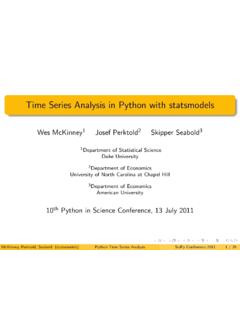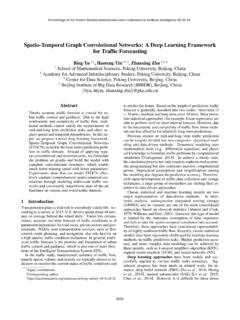Transcription of Title stata.com arima — ARIMA, ARMAX, and other dynamic ...
1 arima , ARMAX, and other dynamic regression modelsSyntaxMenuDescriptionOptionsRemark s and examplesStored resultsMethods and formulasReferencesAlso seeSyntaxBasic syntax for a regression model withARMA disturbancesarimadepvar[indepvars], ar(numlist) ma(numlist)Basic syntax for anARIMA(p,d,q)modelarimadepvar, arima (#p,#d,#q)Basic syntax for a multiplicative seasonalARIMA(p,d,q) (P,D,Q)smodelarimadepvar, arima (#p,#d,#q) sarima(#P,#D,#Q,#s)Full syntaxarimadepvar[indepvars] [if] [in] [weight] [,options]optionsDescriptionModelnoconst antsuppress constant termarima(#p,#d,#q)specifyARIMA(p,d,q) model for dependent variablear(numlist)autoregressive terms of the structural model disturbancema(numlist)moving-average terms of the structural model disturbanceconstraints(constraints)apply specified linear constraintscollinearkeep collinear variablesModel 2sarima(#P,#D,#Q,#s)specify period-#smultiplicative seasonalARIMA termmar(numlist,#s)multiplicative seasonal autoregressive term; may be repeatedmma(numlist,#s)multiplicative seasonal moving-average term; may be repeatedModel 3conditionuse conditionalMLEinstead of fullMLEsavespaceconserve memory during estimationdiffuseuse diffuse prior for starting Kalman filter recursionsp0(#|matname)use alternate prior for starting Kalman recursions; seldom usedstate0(#|matname)use alternate state vector for starting Kalman filter recursionsSE/Robustvce(vcetype)vcetypema y beopg,robust, oroim12 arima arima , ARMAX, and other dynamic regression modelsReportinglevel(#)set confidence level.
2 Default islevel(95)detailreport list of gaps in time seriesnocnsreportdo not display constraintsdisplayoptionscontrol column formats, row spacing, and line widthMaximizationmaximizeoptionscontrol the maximization process; seldom usedcoeflegenddisplay legend instead of statisticsYou musttssetyour data before usingarima; see [TS] contain time-series operators; see[U] Time-series ,fp,rolling,statsby, andxiare allowed; see[U] Prefix are allowed; see[U] not appear in the dialog [U] 20 Estimation and postestimation commandsfor more capabilities of estimation >Time series> arima and ARMAX modelsDescriptionarimafits univariate models with time-dependent a model ofdepvaronindepvarswhere the disturbances are allowed to follow a linear autoregressive moving-average (ARMA)specification.
3 The dependent and independent variables may be differenced or seasonally differencedto any degree. When independent variables are included in the specification, such models are oftencalledARMAX models; and when independent variables are not specified, they reduce to Box Jenkinsautoregressive integrated moving-average ( arima ) models in the dependent variable. MultiplicativeseasonalARMAXandARIMA models can also be fit. Missing data are allowed and are handled usingthe Kalman filter and methods suggested by Harvey (1989 and 1993); seeMethods and the full syntax,depvaris the variable being modeled, and the structural or regression part ofthe model is specified ()andma()specify the lags of autoregressive and moving-average terms, respectively; andmar()andmma()specify the multiplicative seasonal autoregressiveand moving-average terms, time-series operators in the dependent variable and independent variable lists, andmaking extensive use of these operators is often convenient; see[U] Time-series varlistsand[U] Time-series operatorsfor an extended discussion of time-series without arguments redisplays the previous model noconstant.
4 See [R]estimation (#p,#d,#q)is an alternative, shorthand notation for specifying models dependent variable and any independent variables are differenced#dtimes, and 1 through#plags of autocorrelations and 1 through#qlags of moving averages are included in the model . Forexample, the specificationarima arima , ARMAX, and other dynamic regression models 3. arima , ar(1/2) ma(1/3)is equivalent to. arima y, arima (2,1,3)The latter is easier to write for simpleARMAXandARIMA models, but if gaps in theARorMAlags are to be modeled, or if different operators are to be applied to independent variables, thefirst syntax is (numlist)specifies the autoregressive terms of the structural model disturbance to be included inthe model . For example,ar(1/3)specifies that lags of 1, 2, and 3 of the structural disturbancebe included in the model ;ar(1 4)specifies that lags 1 and 4 be included, perhaps to account foradditive quarterly the model does not contain regressors, these terms can also be considered autoregressive termsfor the dependent (numlist)specifies the moving-average terms to be included in the model .
5 These are the terms forthe lagged innovations (white-noise disturbances).constraints(constraints),c ollinear; see [R]estimation constraints are placed between structural model parameters andARMA terms, the first fewiterations may attempt steps into nonstationary areas. This process can be ignored if the finalsolution is well within the bounds of stationary solutions. model 2 sarima(#P,#D,#Q,#s)is an alternative, shorthand notation for specifying the multiplicative seasonalcomponents of models withARMA disturbances. The dependent variable and any independentvariables are lag-#sseasonally differenced #Dtimes, and 1 through#Pseasonal lags of autoregressiveterms and 1 through#Qseasonal lags of moving-average terms are included in the model .
6 Forexample, the specification. arima , ar(1/2) ma(1/3) mar(1/2,12) mma(1/2,12)is equivalent to. arima y, arima (2,1,3) sarima(2,1,2,12)mar(numlist,#s)specifies the lag-#smultiplicative seasonal autoregressive terms. For example,mar(1/2,12)requests that the first two lag-12 multiplicative seasonal autoregressive terms beincluded in the (numlist,#s)specified the lag-#smultiplicative seasonal moving-average terms. For example,mma(1 3,12)requests that the first and third (but not the second) lag-12 multiplicative seasonalmoving-average terms be included in the model . model 3 conditionspecifies that conditional, rather than full, maximum likelihood estimates be presample values for tand tare taken to be their expected value of zero, and the estimateof the variance of tis taken to be constant over the entire sample; see Hamilton (1994, 132).
7 This estimation method is not appropriate for nonstationary series but may be preferable for longseries or for models that have one or more ,p0(), andstate0()have no meaning for models fit from the conditional likelihood and may not be specified arima arima , ARMAX, and other dynamic regression modelsIf the series is long and stationary and the underlying data-generating process does not have a longmemory, estimates will be similar, whether estimated by unconditional maximum likelihood (thedefault), conditional maximum likelihood (condition), or maximum likelihood from a diffuseprior (diffuse).In small samples, however, results of conditional and unconditional maximum likelihood maydiffer substantially; see Ansley and Newbold (1980).
8 Whereas the default unconditional maximumlikelihood estimates make the most use of sample information when all the assumptions of the modelare met, Harvey (1989) and Ansley and Kohn (1985) argue for diffuse priors often, particularly inARIMA models corresponding to an underlying structural may also be preferred when the model contains one or morelongARorMAlags; this avoids inverting potentially large matrices (seediffusebelow).Whenconditionis specified, estimation is performed by thearchcommand (see [TS]arch),and more control of the estimation process can be obtained be specified if the model contains any multiplicative seasonal that memory use be conserved by retaining only those variables required forestimation. The original dataset is restored after estimation.
9 This option is rarely used and shouldbe used only if there is not enough space to fit a model without the option. However,arimarequires considerably more temporary storage during estimation than most estimation commandsin that a diffuse prior (see Harvey 1989 or 1993) be used as a starting point for theKalman filter recursions. Usingdiffuse, nonstationary models may be fit witharima(see thep0()option below;diffuseis equivalent to specifyingp0(1e9)).By default,arimauses the unconditional expected value of the state vector t(seeMethods andformulas) and the mean squared error (MSE) of the state vector to initialize the filter. When theprocess is stationary, this corresponds to the expected value and expected variance of a random drawfrom the state vector and produces unconditional maximum likelihood estimates of the the process is not stationary, however, this default is not appropriate, and the unconditionalMSEcannot be computed.
10 For a nonstationary process, another starting point must be used for the absence of nonsample or presample information,diffusemay be specified to start therecursions from a state vector of zero and a stateMSEmatrix corresponding to an effectivelyinfinite variance on this initial state. This method amounts to an uninformative and improper priorthat is updated to a properMSEas data from the sample become available; see Harvey (1989).Nonstationary models may also correspond to models with infinite variance given a particularspecification. This and other problems with nonstationary series make convergence difficult andsometimes also be useful if a model contains one or more longARorMAlags. Computationof the unconditionalMSEof the state vector (seeMethods and formulas) requires constructionand inversion of a square matrix that is of dimension{max(p,q+1)}2, wherepandqare themaximumARandMAlags, respectively.
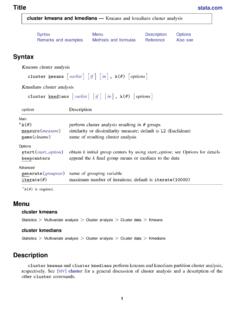
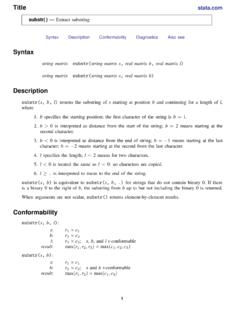
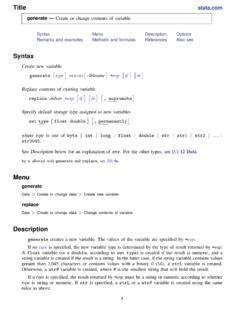
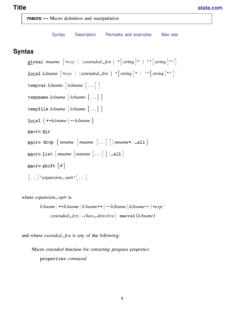
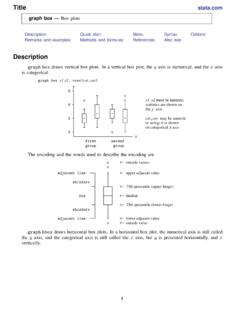
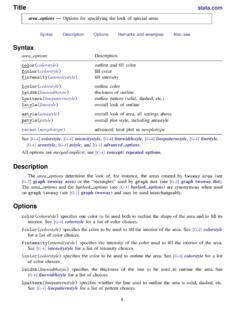
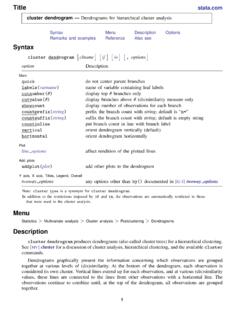
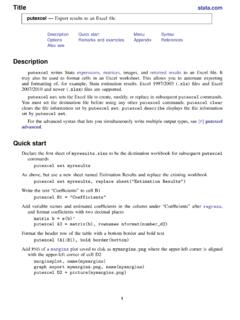
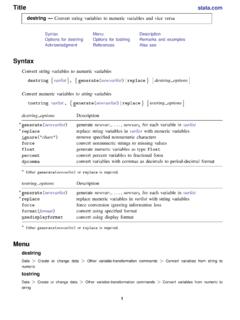
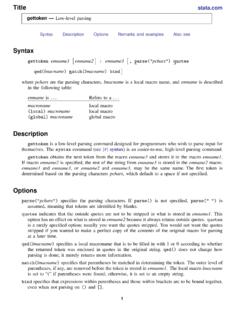
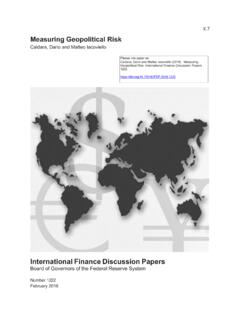
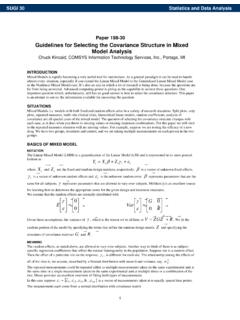
![[TS] Time Series - Stata](/cache/preview/f/9/9/c/5/9/9/f/thumb-f99c599f9adc31cbb3de3d6ed398bf7c.jpg)
